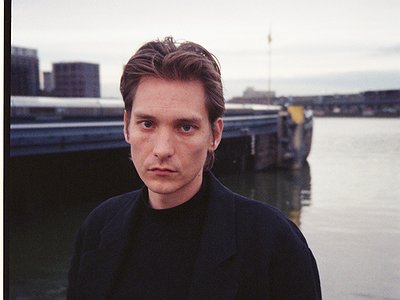Part 1
Name: Thomas Azier
Nationality: Dutch
Occupation: Musician/Artist
Current Release: Love, Disorderly on Hylas Records
Recommendations: Life by Armenian director Peleshian / Sombrero Fallout by Richard Brautigan
Website/Contact: Thomas has a website where you watch videos and get latest tour information at https://www.thomasazier.com/
When did you start writing/producing music - and what or who were your early passions and influences? What is it about music and/or sound that drew you to it?
Music was a way to make sense of the world around me when I didn’t understand it. Growing up in the countryside, it was also simply a way to pass time, like playing outside. I was into improvisation early and would play the first bars of a simple classical piece and then I’d start moving my own melodies around the chords and structure that I interpreted, creating my own world.
I received my first computer and could now record myself in my bedroom. This allowed me to work on concepts within these compositions, and I could turn improvisation into music to express thoughts and ideas instead of it merely being an emotional let go.
For most artists, originality is first preceded by a phase of learning and, often, emulating others. How would you describe your own development as an artist and the transition towards your own voice? What is the relationship between copying, learning and your own creativity?
I see now how imitation and development goes hand in hand, it never ends. Emulating others is part of human behaviour. Samples, quotes, inspiration, and imitation is the very core of pop culture, and pop music feeds of itself and moves forward that way.
Without access to subcultures, concerts/museums etc. I emulated what was going on around me but quickly grew unsatisfied. The internet and its infinite amount of possibilities became my primary source for referencing. I am still a bit confused by the randomness of finding sources online, all I can say is that as a teenager it went awfully slow. There was just too much in all directions. I certainly wasn’t discovering music systematically and had to go along with this randomness.
I moved to Berlin and used the city as a tutor. It took time but I slowly found the beauty of that place and progressively realized I should not discard something too quickly when I couldn’t immediately frame or understand it. it was a simple learning process.
What were your main compositional- and production-challenges in the beginning and how have they changed over time?
In the beginning my main goal was to become self-sufficient. I did not want to keep knocking on doors for production. Looking back on it I wanted to be in control. I started making music with a laptop and always considered home producing a curse AND a gift. I never felt good enough and always felt like an amateur. I never had good speakers, gear, and always messing around with cables. For a long time I looked for answers outside of myself not realizing my own messiness was part of my creation process.
When I started to feel more comfortable with the computer, songwriting and production became a fairly simple puzzle that I needed to solve. I grew tired of symmetry, the grid, tempo, the coloured blocks on a screen. So, my curiosity turned towards collaboration and older ‘studio’ knowledge. I have always admired the German and French education systems for inviting high school students into successful studio spaces to get a feeling. I feel this knowledge, especially now laptop production is the norm, should still be accessible in a practical way to younger people.
What was your first studio like? How and for what reasons has your set-up evolved over the years and what are currently some of the most important pieces of gear for you?
My studios up till the record I just released called Love, Disorderly always consisted of a laptop and a few pieces of hardware which became the sound of the album. Never feeling truly comfortable with the many options inside the computer, I was very eager to give up my ‘control’. I started working with experimental guitar player Obi Blanche on textures. We fell in love with RHYTHM MKII, a powerful analogue drum computer from Elektron. We also started using DIY guitars Obi was building with builder Yuri Landman. The sounds coming out of these guitars felt fresh, and I wanted to juxtapose it with orchestral elements to make it sound more decisive.
When it all came together, composing for a string orchestra and playing around with the material afterwards was priceless. Something happens in a room when everything is live, no overdubs. The bandwidth of your projects increases because everyone is there only for one moment and is highly concentrated.
How do you make use of technology? In terms of the feedback mechanism between technology and creativity, what do humans excel at, what do machines excel at?
I don’t want machines to define me. They are tools and I don’t want to mythicize them. Music starts inside of me and there are many different machines that could channel it. I like when machines have a mind of their own, they surprise you. I like machines who make mistakes, randomize things. When you don’t know a device or instrument that well you start playing around with it, and these very first minutes are often very fertile. There’s a beauty in the incompetence and naivety, like a child winning at a video game because it’s just smashing buttons.
Production tools, from instruments to complex software environments, contribute to the compositional process. How does this manifest itself in your work? Can you describe the co-authorship between yourself and your tools?
I pick instruments up for research and try to find sounds that have incredible texture but are still useable within my songwriting. Brian Eno said, repetition is a form of change. I find tools that give me loops that I can listen to, and build on forever. I’ve been falling in love with The Pipe, a synthesizer you control with your mouth. I am not into too many options, I want things to be simple, almost primitive.
Collaborations can take on many forms. What role do they play in your approach and what are your preferred ways of engaging with other creatives through, for example, file sharing, jamming or just talking about ideas?
If the work is divided into content and process, people will often agree on the content at the start of a collaboration, but the process is rarely questioned. I want the process and the people I work with to reflect my sense of ethics to get an end result that I can fully support.
I am actively looking for artists who work independently, outside of a systemized making-system and who are interested in pop culture, cinema, and art. The first discussions about cooperation are therefore based on finding a shared philosophy.
I prefer using the word improvisation than jamming. For me improvisation is when you are moving towards something together, it’s a form of composing that fully forms itself in the present. When you’re lucky it takes you places far beyond your own capability. My best songs come from full improvisations, not from a premeditated structure.
On Hold On Tight, I use what they call glossolalia, a term for speaking in tongues. Gibberish in English. It’s a thing kids do when they try to sing the lyrics they don’t know. I composed and improvised that song at the same time. My girlfriend Ellen Treasure insisted that I should keep it this way.
It sparked an inner debate about professionally vs. amateurism and it took a year for her to convince me that I could sing a poem made of unidentifiable words.






